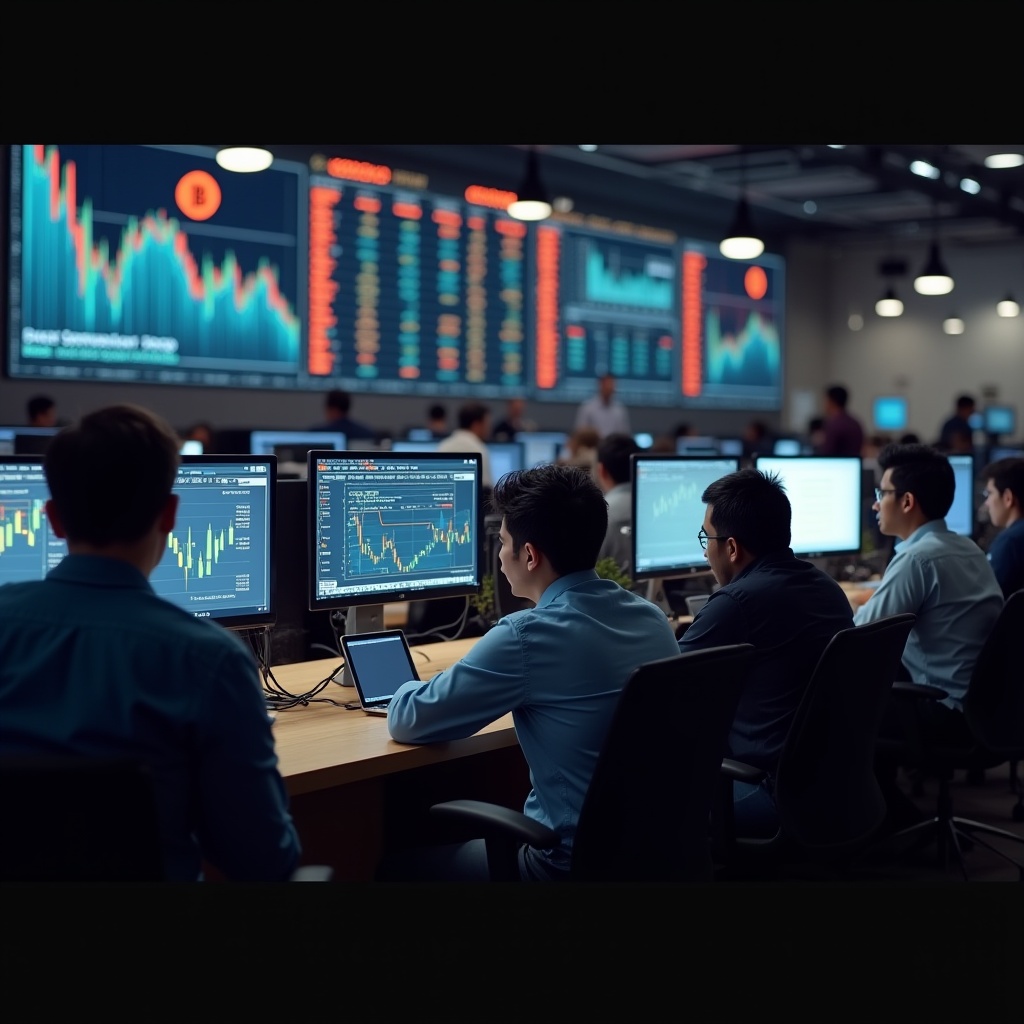If you’re actively trading or investing in Bitcoin, you’ve likely noticed a significant shift in the perpetual futures market over the past few weeks: funding rates across major exchanges have turned positive. This development marks a notable change from the predominantly negative funding rates observed earlier in the year.
But what does this mean for you as a trader or investor? A positive funding rate indicates that long position holders are paying short position holders, reflecting a bullish market sentiment. This shift suggests that more traders are betting on Bitcoin’s price to rise, leading to increased demand for long positions.
Understanding the implications of this change is crucial. While a positive funding rate can signal confidence in Bitcoin’s upward trajectory, it also introduces new dynamics to the market. Traders must consider factors like potential overleveraging, the risk of sudden market corrections, and the sustainability of the current bullish momentum.
In this article, we’ll delve into the mechanics of funding rates, explore the current market conditions, and discuss what this means for your trading strategies. Whether you’re a seasoned trader or a newcomer to the crypto space, gaining a clear understanding of these developments will help you navigate the evolving landscape with greater confidence.
Understanding Funding Rates
To grasp the current dynamics of Bitcoin’s funding rates, it’s essential to first understand what they represent and how they influence market behavior.
What Are Funding Rates?
In the realm of cryptocurrency trading, particularly with perpetual futures contracts, funding rates are periodic payments exchanged between traders holding long (buy) and short (sell) positions. These payments occur at regular intervals, typically every eight hours, and are designed to ensure that the price of the perpetual futures contract aligns closely with the underlying spot price of the asset—in this case, Bitcoin.
The funding rate is determined by two primary components:
- Interest Rate: A fixed fee set by the exchange, often minimal, that reflects the cost of borrowing funds.
- Premium Index: The difference between the perpetual futures price and the spot price of Bitcoin.
When the perpetual futures price is higher than the spot price, the premium index is positive, leading to a positive funding rate. Conversely, if the futures price is lower, the funding rate becomes negative.
Interpreting Positive Funding Rates
A positive funding rate indicates that long position holders are paying short position holders. This scenario typically arises when the market sentiment is bullish, leading to increased demand for long positions. Traders are willing to pay a premium to maintain their long positions, anticipating further price increases.
However, while a positive funding rate reflects optimism, it also serves as a cautionary signal. If the funding rate becomes excessively high, it may indicate that the market is becoming overleveraged. In such cases, a sudden market correction could trigger a cascade of liquidations, leading to a sharp price decline.
Current State of BTC Funding Rates
As of mid-June 2025, Bitcoin’s funding rates across major cryptocurrency exchanges have turned positive, signaling a shift in market sentiment. This change reflects an increasing number of traders taking long positions in perpetual futures contracts, indicating a bullish outlook on Bitcoin’s price.
Data from various exchanges shows the following funding rates:
- Binance: Approximately +0.01%
- Bybit: Around +0.0045%
- Kraken: Approximately +0.0128%
- OKX: Around +0.0014%
- BitMEX: Approximately +0.0100%
- Huobi: Around -0.0130%
These rates are updated every eight hours and can vary slightly between exchanges due to differences in user behavior and market conditions.
Historically, positive funding rates have been associated with bullish market conditions. For instance, during the 2021 bull run, funding rates on major exchanges like Binance and Bybit spiked to annualized rates exceeding 80%, coinciding with Bitcoin’s price reaching new all-time highs.
Currently, the funding rates are not as extreme but are still indicative of a market leaning towards bullish sentiment. The funding rates have been gradually increasing over the past few weeks, reflecting growing confidence among traders.
Implications for Traders and Investors
The recent shift in Bitcoin’s funding rates turning positive across major exchanges carries significant implications for traders and investors. Understanding these implications is crucial for making informed decisions in the current market environment.
Market Sentiment and Positioning
Positive funding rates indicate a bullish market sentiment, with more traders taking long positions in anticipation of price increases. This shift suggests growing confidence in Bitcoin’s upward trajectory. However, it’s essential to monitor these rates closely, as sustained positive funding rates can lead to overleveraging, increasing the risk of sudden market corrections.
Risk of Overleveraging
As funding rates rise, traders may be enticed to use higher leverage to maximize potential returns. While this can amplify profits during favorable market conditions, it also heightens the risk of significant losses if the market moves against their positions. It’s crucial for traders to assess their risk tolerance and consider implementing risk management strategies, such as setting stop-loss orders and avoiding excessive leverage.
Strategic Adjustments
Investors and traders should consider adjusting their strategies in response to changing funding rates. For instance, those holding long positions may choose to lock in profits or hedge their positions to mitigate potential downside risks. Conversely, short traders might find opportunities to enter positions if funding rates turn negative, indicating a shift towards bearish sentiment.
Monitoring Market Indicators
It’s essential to monitor various market indicators, including funding rates, open interest, and price action, to gauge market dynamics effectively. A sudden increase in funding rates, coupled with rising open interest, may signal the potential for a short squeeze, where a rapid price increase forces short sellers to cover their positions, further driving up the price. Conversely, declining funding rates could indicate weakening bullish momentum.
Long-Term Considerations
While short-term market fluctuations are influenced by funding rates, it’s also important to consider long-term factors affecting Bitcoin’s price. These include macroeconomic trends, regulatory developments, and institutional adoption. A comprehensive understanding of both short-term and long-term factors will enable traders and investors to make well-informed decisions and navigate the complexities of the cryptocurrency market effectively.
Potential Market Movements
The recent shift in Bitcoin’s funding rates turning positive across major exchanges has significant implications for potential market movements. Understanding these dynamics is crucial for traders and investors looking to navigate the evolving landscape.
Price Action Correlation
Historically, positive funding rates have been associated with bullish market conditions. For instance, during the 2021 bull run, funding rates on major exchanges like Binance and Bybit spiked to annualized rates exceeding 80%, coinciding with Bitcoin’s price reaching new all-time highs. Currently, the funding rates are not as extreme but are still indicative of a market leaning towards bullish sentiment.
As of June 11, 2025, Bitcoin is trading at approximately $110,053, nearing its all-time high of $111,970 reached in May 2025. This price movement aligns with the positive funding rates, suggesting that the current bullish trend may continue if the funding rates remain elevated.
Short Squeeze Potential
Positive funding rates indicate that long position holders are paying short position holders, reflecting a bullish market sentiment. If the funding rates continue to rise, it could lead to overleveraging, increasing the risk of a short squeeze. In such a scenario, a sudden price increase could force short sellers to cover their positions, further driving up the price.
Resistance Levels
As Bitcoin approaches its all-time high, it may encounter resistance levels that could impede further price increases. Technical analysis suggests that the $112,000 to $115,000 range could act as a significant resistance zone. Traders should monitor these levels closely, as a breakout above them could signal a continuation of the bullish trend, while a rejection could lead to a price correction.
Market Sentiment Indicators
The Fear & Greed Index, a popular market sentiment indicator, currently stands at 73, indicating a state of greed among investors. While this suggests optimism, it also raises concerns about potential overvaluation and the risk of a market correction. Traders should exercise caution and consider implementing risk management strategies to mitigate potential losses.
Institutional Involvement
Institutional participation in the Bitcoin market has been increasing, with entities like MicroStrategy and Tesla holding significant amounts of Bitcoin. This institutional involvement adds credibility to the market but also introduces additional volatility, as large transactions can impact price movements. Traders should stay informed about institutional activities and their potential effects on the market.
Tools for Monitoring Funding Rates
Staying informed about funding rates is crucial for traders and investors in the cryptocurrency market. Several platforms provide real-time data and analytics to help you monitor these rates effectively.
CryptoQuant
CryptoQuant offers comprehensive on-chain data and analytics, including funding rates across various exchanges. Their charts provide insights into market sentiment and potential price movements. For instance, their funding rates chart indicates a significant uptick in positive funding rates, suggesting increased long positions in the market.
CoinGlass
CoinGlass provides a detailed overview of funding rates, open interest, and liquidation data across multiple exchanges. Their heatmaps and charts allow traders to compare funding rates in real-time and identify trends. Currently, their data shows a positive funding rate for Bitcoin, indicating a bullish market sentiment.
Binance Futures
Binance offers real-time funding rate data for its futures contracts. Their platform allows users to view the current funding rate, interest rate, and funding cap/floor for various trading pairs. As of the latest data, the funding rate for BTC/USDT perpetual contracts is approximately 0.0050%, reflecting a positive outlook among traders.
Deribit
Deribit is known for its high leverage offerings and provides detailed funding rate information for its perpetual contracts. Their platform shows that the funding rate for BTC perpetual contracts has reached 36.1% APR, indicating strong demand for long positions.
Hyperliquid
Hyperliquid offers advanced trading features and real-time funding rate data. Their platform indicates a funding rate of 27.5% APR for BTC perpetual contracts, suggesting a bullish market sentiment.
By utilizing these platforms, traders and investors can gain valuable insights into funding rates, helping them make informed decisions in the dynamic cryptocurrency market.
Navigating the Current BTC Funding Rate Landscape
As of mid-June 2025, Bitcoin’s funding rates across major exchanges have turned positive, signaling a shift in market sentiment. This development suggests a growing bullish outlook among traders, with more participants taking long positions in anticipation of price increases. However, it’s essential to approach this trend with caution. While positive funding rates indicate optimism, they can also lead to overleveraging, increasing the risk of sudden market corrections. Traders should monitor these rates closely, as significant increases could signal an overheated market, warranting prudent risk management strategies.
In summary, the current positive funding rates reflect a bullish sentiment in the Bitcoin market. By staying informed and adjusting strategies accordingly, traders and investors can navigate this evolving landscape effectively.





